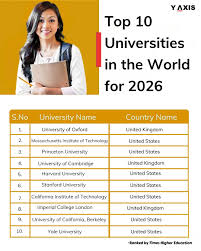University Rankings 2026: Trends and Expectations

Introduction
As the global education landscape evolves, university rankings hold significant importance for students, institutions, and policymakers alike. These rankings shape perceptions and influence decisions regarding higher education. With the anticipation of the university rankings for 2026, it is crucial to understand the factors that drive these evaluations and what they mean for prospective students and educational institutions.
The Importance of University Rankings
University rankings provide a framework for evaluating the quality of education across the globe. They are used by millions of prospective students to make informed choices about where to study. Rankings are influenced by various indicators, including academic reputation, faculty-student ratio, research output, and international diversity. As competition intensifies, the significance of these metrics becomes even more pronounced.
Factors Influencing Rankings in 2026
Several trends are expected to shape the university rankings in 2026:
- Research Quality: The impact of research on societal challenges is expected to gain more weight. Universities that contribute to scientific advancements and address global issues may rank higher.
- Online Education: With the shift towards digital learning accelerated by the pandemic, institutions offering robust online programs may gain a competitive edge.
- Diversity and Inclusion: A commitment to diversity in both the student body and faculty will likely become a significant criterion, reflecting the globalised nature of education.
- Graduate Employability: Universities that demonstrate high levels of graduate employment and industry partnerships could see an improvement in their rankings.
Current Trends in Rankings
In the recent university rankings released in 2023, institutions worldwide have made significant strides in enhancing their reputations. Universities in Asia, particularly in countries like China and Singapore, have shown remarkable growth, challenging the long-standing dominance of Western institutions. This shift highlights a more diverse educational landscape, with increased opportunities for collaboration and exchange.
Conclusion
The university rankings for 2026 are poised to reflect a rapidly changing educational environment. As universities adapt to new demands, their ranking will be influenced by their ability to innovate, engage with global challenges, and remain accessible to a diverse student population. Prospective students and educational stakeholders should keep a close watch on these developments, as the implications of university rankings extend far beyond mere numbers – they shape the future of education itself.









